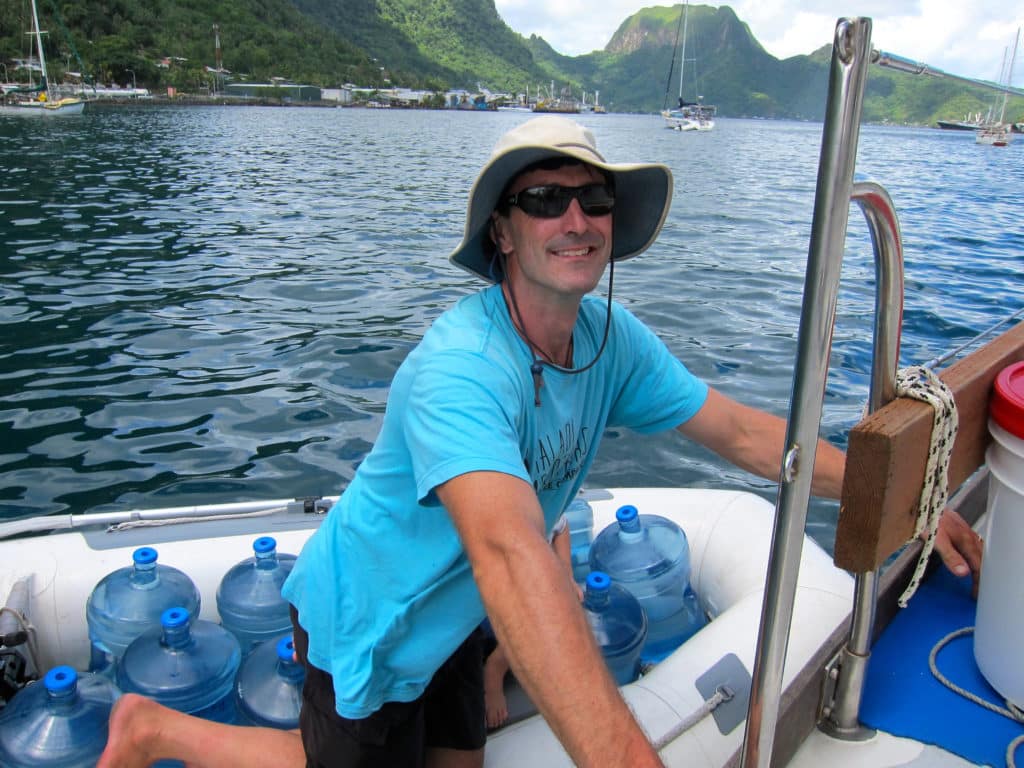
We pulled into Neiafu, Tonga, after a dreamlike passage from Suwarrow, in the Cook Islands. As Pelagic, the Crealock 37 we then owned, pulled into the mooring field, my wife, Alisa, pointed at an inflatable puttering out to meet us.
“Look,” she said. “There’s Macy!”
Our friends Julia and Dave, of the beautiful wooden yacht Macy, had spotted us entering the anchorage and come out to say hello. We had last seen them in the Tuamotus, and we spent the night catching up over a bottle of Panamanian rum. After we’d heard each other’s stories, it came out that Macy had a bit of a problem. Their outboard was acting up. Within a couple of days, it was dead. Julia’s brother and his two kids were flying out from the States to explore Tonga on Macy, but without an outboard to drive their RIB, Julia and Dave couldn’t play host. Macy would be portbound until another outboard could be found.
We were sympathetic, but it was hard to truly feel their pain. We had never had an outboard on Pelagic, and always rowed ashore. There are few odder moments in the cruising life than when you see another boat brought to a halt by the breakdown of gear you’ve never had.
That was seven years ago. But as Alisa and I have made a boat switch to accommodate our change from a family of three to a family of four, and as I’ve worked on various systems on our present sailboat, Galactic, a 45-foot cutter, that moment has stayed with me as the perfect example of how additional gear can take away from the sailing life at the same time that it gives. I should make it clear that we are far from being exemplars of simplicity: We now have an outboard, as well as radar, a refrigerator, a high-frequency radio with modem, an autopilot, a laptop running as a plotter and AIS, two wind generators and three solar panels. But Alisa and I have come to this level of complexity over eight years of full-time sailing. The first time we crossed the Pacific on Pelagic, we did it with a windvane but no autopilot. I’ve heard people say that you must have a watermaker, chart plotter and on-board weather forecasts to cross the Pacific. But we’ve crossed the Pacific more than once without these things. And while we were out making these crossings, plotting our position on paper charts and, for the first crossing at least, taking whatever weather came along because we couldn’t download GRIB files, someone else was doubtless working on their boat in a marina, adding these “must-haves” so they could leave.
It’s a tried and true message — “Keep your boat simple!” — but it’s one that our own culture, so focused on acquisition, just can’t seem to learn. When we decide to go sailing, it feels as though we need to buy stuff. To be proper sailors, we have to buy the right gear to show how serious we are. But many boats bought with the Big Trip in mind never get away from the dock, and the huge amount of money and effort invested in gear has to be a part of the reason why. The last time we were in an American marina, as we were getting Galactic ready to cross the Pacific, I was mesmerized by the sight of all the boats that never left the harbor, each mast festooned with its very own radar dome that we’d never seen turned on.
If you want to get away, you have to keep the difference between means and ends well in mind. The goal is a life that is fluid and free, unencumbered by possession and open to spontaneity, a life able to pay the rewards of a well-laid plan. Make sure that the gear is serving the ends of whatever adventure you imagine at sea, rather than turning into a goal of its own. Most boat gear can be justified as useful. But the sum total of all the useful items can completely swamp you. There’s no way, when you’re starting off, that you can keep it all running and have any time left over to sail. The marinas of the world are full of boats set to leave on an open-ended trip — next year. Every week you spend installing a fridge, watermaker or SSB, every week you try to integrate your plotter with your autopilot, is another strike against your chances of turning “next year” into “this year.”
When you look at your boat, and at your dreams for where that boat will take you, think about what you don’t need rather than what you do. Your boat will never be truly ready to go anyway, so you might as well call it good with the most basic gear you can imagine using and see how far you get with that setup. Decide what your boat doesn’t need. Then go sail a thousand miles, and see if you weren’t right.
Mike Litzow is the author of South from Alaska: Sailing to Australia with a Baby for Crew.








